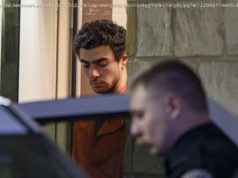One hundred years and a day after one of the country’s bloodiest massacres of the 20th Century, the city of Tulsa, Oklahoma, on Tuesday will begin exhuming bodies possibly linked to the crimes.
One hundred years and a day after one of the country’s bloodiest massacres of the 20th Century, the city of Tulsa, Oklahoma, on Tuesday will begin exhuming bodies possibly linked to the crimes. The efforts to retrieve at least a dozen sets of remains — which experts believe may belong to victims of the 1921 massacre on the city’s Black Wall Street — commences a day after a long Memorial Day weekend of events remembering the dark episode and honoring its victims. On Tuesday morning, experts led in part by the Oklahoma Archaeological Survey will begin mapping and prepping the site located in Oaklawn Cemetery, near the headstones of massacre victims Eddie Lockard and Reuben Everett. Though ground-penetrating radar identified 12 coffins, a funeral home ledger suggests there may be 18 bodies in the area. The excavation team is preparing for the possibility of finding as many as 30. Heavy machinery will scrape off the first few feet of topsoil to begin the process. “There may also be some hand-excavation, use of metal detectors, and screening of excavated soil — depending on what is discovered during the first day,” according to details released by the city. “At the same time, other research team members will be working to set up on-site workstations for artifact processing and laboratory analyses.” Once the bodies are exhumed, the city and its public oversight committee will determine the next steps for “storing remains, DNA testing and genealogical research, and commemorating the gravesites and honoring the remains,” said a city news release. The work — which will unfold behind a screening fence with researchers, cultural monitors, historians, morticians, a forensic anthropologist and a videographer — may take months, the city says. That’s not counting the efforts to identify the bodies and determine if they are indeed victims of the massacre. Yet, despite what appears to be an on-ramp to justice, some observers say the road is long and the direction isn’t clear. “I commend the city for doing something, but it is apparent that justice for the Greenwood community and for the survivors and for those who were killed is not a priority,” said the Rev. Robert Turner of Historic Vernon AME Church, the basement of which survived the church’s torching during the attack. He is also a member of the Tulsa Mass Graves Oversight Committee. A descendant of massacre survivors has lambasted a plan, albeit now temporary, to inter victims in the same cemetery as the perpetrators of the attack. And a human rights watchdog has criticized Tulsa’s refusal to deliver reparations to victims’ relatives, despite the nonprofit Centennial Commission raising about $30 million in private funds — the lion’s share of which is earmarked for a history center. Meanwhile, a lawsuit filed by descendants of victims, three centenarian survivors of the massacre and Turner’s church demands reparations and accuses the city, Tulsa County and other defendants of “exploitation of the massacre for their own economic and political gain.” Turner wishes reparations were as high a priority as finding the graves, he told CNN. Tulsa spokesperson Michelle Brooks said the city cannot comment on pending litigation and emphasized that the funds raised for the history center were private, not taxpayer dollars. As for the pace of the excavations, Brooks pointed out that before Mayor G.
Home
United States
USA — Criminal As Tulsa digs for victims of 1921 massacre, victims say road to...






